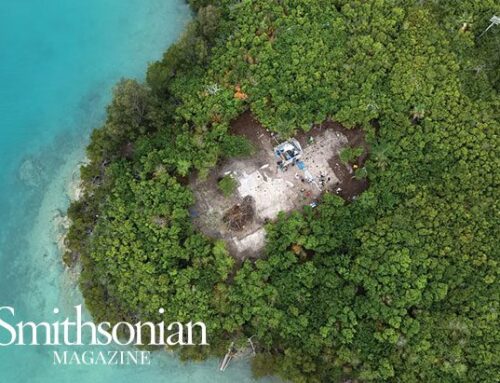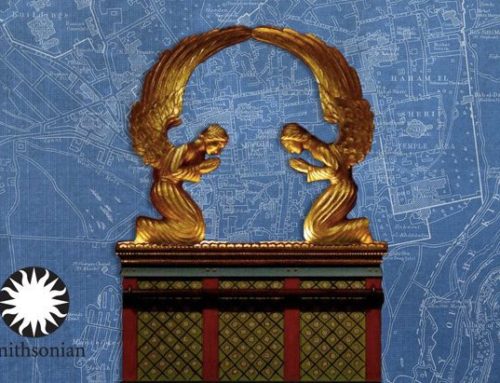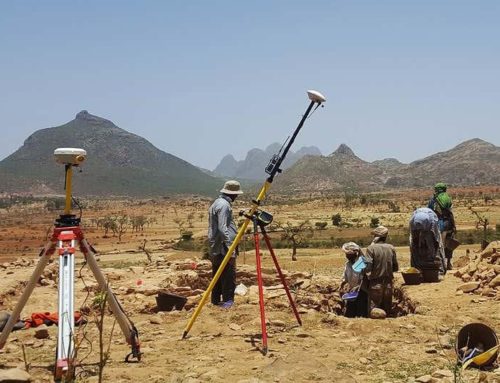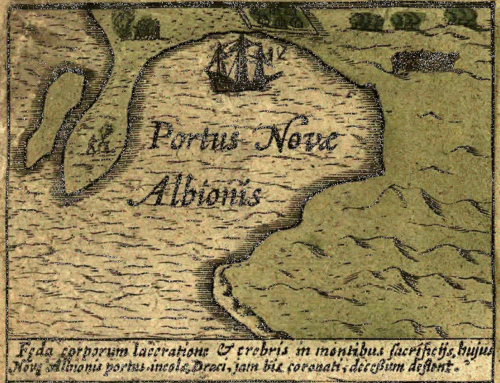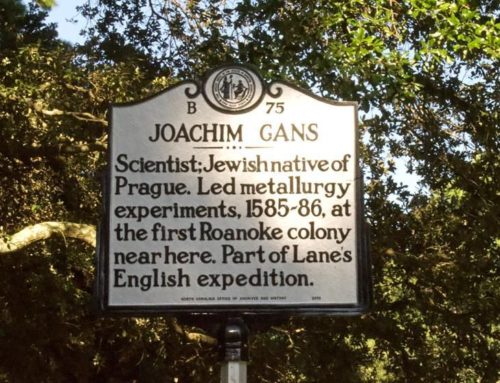AIn Iran, an archaeologist is racing to uncover a literate Bronze Age society he believes predates ancient Mesopotamia. Critics say he may be overreaching, but they concede his dig will likely change our view of the dawn of civilization.
American archaeologist, who wanders over from a nearby trench. To the untrained eye, the spot in Gholami’s wall is just a slightly darker bit of soil in a precise rectangular hole. The two archaeologists, though, think it might be a precious clue to a civilization that vanished more than 4,000 years ago and is only now coming to light.Using brushes and toothpicks, Pittman begins coaxing the discolored chunk out of the wall. An hour later, she adjusts her white-and-black head scarf and triumphantly shows off the results of their labor: a chunk of dried mud about the size of a bar of soap. To Yousef Madjidzadeh, the expatriate Iranian archaeologist who is leading the expedition, it’s a triumphant moment, providing further evidence that he has found the remains of the mysterious Bronze Age culture of Aratta—a lost city celebrated in a four-millennia-old epic for its colorful architecture and excellent craftsmanship. “This is magnificent!” Madjidzadeh says, so overcome he takes a seat on a ledge in the trench. “I’m going to cry.”
The earthen clod contains an impression probably made by a scribe, priest or merchant rolling a cylindrical seal on damp clay. It is one of a dozen such impressions discovered here in the past month. But what has brought tears to Madjidzadeh’s eyes are the curious markings on the imprint—the first clear sign that this civilization had achieved literacy.
The last-minute discovery and others made during the dig have convinced Madjidzadeh that this desolate valley, watered by the Halil River, was once home to a thriving—and literate—community. He calls it nothing less than “the earliest Oriental civilization.” It’s a dramatic assertion, but if he’s right, it would mean the Halil River site could be older than Mesopotamia, a thousand miles to the west in what is today Iraq and long acknowledged as one of the earliest civilizations. Confirmation would enhance the understanding of the critical period when people began to live a literate urban life. It would also bestow prominence to this forgotten corner of Iran.
Others are more cautious. The age of the site has not been scientifically established, and there isn’t enough research on the area to conclusively cross-reference the finds with other sites. Even Pittman gently suggests that there is not enough evidence yet to back up Madjidzadeh’s claims. “He’s a typical archaeologist,” she says with a smile and a shrug. “His site is the center of the universe.” Still, she adds, it is “a very exciting site. The fact that this was a third millennium civilization adds tremendously to our knowledge of the time.”
It took an unlikely combination of events—a flood in this region, combined with a political thaw in distant Tehran, the Iranian capital—to bring Madjidzadeh here in the first place. In 2001, local villagers began plundering ancient graves exposed by a flash flood. Iranian police confiscated hundreds of finely worked stone vessels carved with images of animals and architecture and decorated with semiprecious stones. Because the vessels were not scientifically recovered, their age and origin are open to debate. But Madjidzadeh strongly believes most were made in this valley more than 4,000 years ago. If so, they can provide clues about how the Halil River people lived, died, worked and prayed.
Even more intriguing, the artifacts resemble vessels that have been found from today’s Syria all the way to the Indus River Valley and definitively date to the middle of the third millennium b.c. The identity and center of the culture that made these stone vessels have never before been pinpointed, but in the 1970s Harvard archaeologist Carl Lamberg-Karlovsky discovered a workshop for making the distinctive stone vessels while digging at a site called Tepe Yahya, just over the mountains from here.
The third millennium b.c. was a critical and even romantic time in human history, when writing flourished for the first time. One of the oldest recorded stories describes a
struggle between the king of Uruk—a thriving port in southern Mesopotamia where writing is believed to have begun around 3200 b.c.—and the lord of a land called Aratta. “Aratta’s battlements are of green lapis lazuli, its walls and its towering brickwork are bright red, their brick clay is made of tinstone dug out in the mountains where the cypress grows,” the epic reads. Uruk’s king Enmerkar asks the lord of Aratta to submit to him. The lord refuses, despite the drought ravaging his land, and instead wrests much-needed grain from Uruk, staving off the Mesopotamians until the rains return. Enmerkar’s defeat is interpreted as a parable of the arrogance of power.
Some scholars argue that Aratta was a powerful, artistically advanced kingdom located in Armenia or western Iran. Others say it is merely the stuff of myth. Madjidzadeh, a vigorous man in his 60s with a neatly trimmed beard, has long believed that a great culture flowered in Aratta—and that the ancient kingdom was located here in southeastern Iran. Lamberg-Karlovsky’s discovery at Tepe Yahya inspired Madjidzadeh, then a doctoral student at the University of Chicago, to pursue Aratta’s origins when he returned to Iran to teach at Tehran University in 1970.
His plans were dashed by the toppling of the Shah of Iran during 1979’s Islamic Revolution. Foreign archaeologists were no longer welcome in the country, and Madjidzadeh— married to a French woman and Western-educated—was labeled a counterrevolutionary and stripped of his professor ship. It would take nearly 25 years for him to resume the search for Aratta.
I meet up with pittman, a professor and museum curator at the University of Pennsylvania, hundreds of miles from the dig, in the sprawling metropolis of Tehran. From there, we hop on a packed commercial jet, flying over pale deserts and brown mountains, to Kerman, where a driver from Madjidzadeh’s team meets us for the three-hour journey south to Jiroft. With a population of 300,000, Jiroft is the biggest city in the Halil River Valley, known for its succulent fruits, fresh vegetables and independent-minded people.
The sun is setting across row after row of snowcapped peaks as Pittman and I ride down into the Halil River Valley. High mountain ramparts enclose the valley on three sides, and the snaking Halil River winds across the bottom before vanishing in a distant desert marsh. The region’s remoteness has kept it out of history’s limelight, save for a possible visit by Alexander the Great on his disastrous return from India in 325 b.c. and a Mogul invasion 1,500 years later. The unforgiving environment, more than marauding troops, has shaped the place. Summer temperatures regularly soar above 120 degrees—ideal weather for the date harvest, since it is too hot even for flies. Droughts can last for years. Earthquakes and floods have littered the valley with the ruins of settlements stretching from Neolithic times to the 19th century. Yet as we drive out of the mountains, there are patches of astonishing dark green vegetation. Date palm groves and citrus orchards mingle with long plastic greenhouses.
Madjidzadeh’s compound, or dig house, is nestled in a lovely grove of orange trees. But this is no idyll. Two dozen crew members are crowded into two concrete buildings, sharing rooms and computers and eating at a long communal table. At precisely 6:30 every morning, a rickety bus takes the sleepy researchers south along the river, through palm-shaded villages with mud-brick houses. Women in black chadors can be seen carrying flatbread, and donkeys with children on their backs clip-clop down alleys. The bus stops in one village and unloads a dozen people near a high mound before moving a mile down the road to a second massive mound.
Somewhere in these two man-made hills, Madjidzadeh believes, are the keys to the mysterious civilization that built Aratta. He has fielded a large crew to work in January and February, the coolest time of the year. In six weeks, 16 archaeologists and more than 200 workers will dig 18 trenches and open an acre and a half of earth. Most of the workers are local, and when the bus arrives many are already waiting, shovels in hand and wearing checkered head scarves around their necks to ward off the morning chill.
Madjidzadeh points to the dusty remains of unusual scalloped walls around the edge of the second mound. Else Elsewhere, workers have revealed drainage channels and stone foundations. Madjidzadeh says this site may have been the protective citadel and administrative center of Aratta. The elaborate walls and multistoried buildings are reminiscent of details etched on stone vessels recovered 900 miles away. And this was no isolated fortress. In a trench close to the hill, workers uncovered the remains of a 14-room house; the citadel appears to have been ringed by residences.
Madjidzadeh’s work at the other hill revealed what was once a massive mud-brick platform with at least one and possibly two smaller platforms on top. The structure’s exact age is uncertain, but based on potsherds found at the site, it may have been built around the middle or end of the third millennium b.c. The structure resembles a Sumerian ziggurat. In distant Mesopotamia, such structures usually stood at the center of a temple complex. Even by Mesopotamian standards, this mound is impressive; Madjidzadeh says the complex required some three million to four million mud bricks. Today, the mound remains sufficiently formidable to provide refuge for local villagers during floods.
In 2001, after the raging Halil River uncovered an ancient cemetery, an orgy of looting ensued, with hundreds, even thousands, of locals raiding graveyards south of Jiroft. “We guess that 100,000 objects were looted,” Madjidzadeh says one evening at the dig-house dinner table. “It’s a sad story. Looters made 10,000 holes over one and a half years.” Based on information he’s collected from villagers, each grave contained at least one stone vessel; the largest grave held 30.
All that’s left of one cemetery are hundreds of ugly round holes, some as deep as 16 feet, pockmarking the plain alongside the shallow river. Nothing seems to have survived the raids but broken potsherds closely resembling those that Madjidzadeh is finding at the mounds. Two policemen appear suddenly when I visit a looted cemetery with two team members one afternoon. Both have their shirttails out and neither is old enough to grow a real mustache, though one has a rifle. But they are guarding only empty holes.
Later that day, a young man stops by Gholami’s trench to chat with the workers. He says his name is Ali. His clothes are a notch nicer than his compatriots’, and his motorcycle, waiting beside the road, is shiny and new. Why isn’t he part of the digging team? “Do you prefer traveling in a minibus or a Mercedes?” Ali asks slyly. He says he digs too—not in the midday heat for archaeologists but at night, for his own gain. He’s heard that others found a fish made of lapis lazuli just five nights before. “There are always guys showing up to buy things we dig up,” Ali says. “It’s normal.” Local and national authorities were slow to halt the looting when it began, and the protection in place now is hardly effective. “Police have come, but they aren’t doing anything serious,” Ali says.
A number of villagers have reportedly been arrested for a trial later this year. “I was told I was a looter, and they said they found opium in my car,” he says during a visit to the dig house. He denies the charges of looting and drug possession, insisting he is a political scapegoat. “People here like to have money, and they know there was an ancient city here—but they don’t understand anything about ancient culture or archaeology.”
And the looting continues. One day, a chartered helicopter doing aerial photography for the archaeologists spots illegal diggers in broad daylight. They flee, but the pilot trails them right to their homes. “The police chief was onboard,” Madjidzadeh laughs. “And he says he will arrest them tomorrow.” Such arrests, however, do little to stop the flow of artifacts from these cemeteries to dealers abroad.
To some locals, Madjidzadeh is simply one more treasure hunter muscling in on a good thing. To change that perception, the archaeologist gives lectures and slide shows in a different village each week to educate people about their heritage and its importance. It’s a tough sell. “This is your history, your grandparents’ legacy,” he tells one group gathered a few miles from Jiroft. His speech, in a mud-brick hall, is met with polite attention and indifference. The hundred or so men in the audience—no women are present, save for several of the archaeologists—get up when he finishes and shuffle away without asking any questions.
Madjidzadeh rarely acknowledges defeat. For years after Tehran University dismissed him, he fought the school in court before going into self-imposed exile in France with his wife and their two children. In 1997, the election of the reform- minded president Mohammad Khatami loosened the conservatives’ hold on the Iranian government. When the looting around Jiroft reached epidemic proportions, Iranian officials asked Madjidzadeh — now a French citizen — to return and conduct scientific excavations in the region. “There was a lot of danger,” he says of his initial visit in 2001. At one point, soldiers shot and killed a teacher who’d been digging illegally. He worried looters would shoot archaeologists.
The first thing he did was examine hundreds of looted objects, mainly funerary vessels, that police had confiscated. “I drew them, photographed them, slept with them,” he says. When he was finally ready to dig in early 2003, he made a calculated decision to avoid the cemeteries and focus on the two mounds.“People thought we were crazy. They asked, ‘Why dig there? There’s no treasure there, just potsherds.’ ”
But by digging at the mounds, he gained the trust of area villagers, showing them that archaeology was about understanding the past, not treasure hunting. And by giving villagers steady work, he encourages them to protect the site.
While educating area villagers, Madjidzadeh is also trying to train young Iranian archaeologists. Because of the 1979 revolution, which closed the door to the outside world, an eight-year-long war with Iraq and a struggling economy, most of them are poorly paid and have scant knowledge of modern techniques. Madjidzadeh drives the team hard. Every night there is a lengthy seminar, and everyone is expected to put in long hours drawing, cataloging and analyzing their finds. A believer in women’s rights, Madjidzadeh also encourages the participation of female archaeologists, such as Gholami.
For Gholami, 36, and the dig’s other women, 56-year-old Penn archaeologist Pittman is a model. Gholami and Pittman spend what little free time they have chatting over glasses of tea. Pittman is among the very first American archaeologists to dig in Iran in nearly a quarter-century. At the moment, she’s
in the workroom, leaning her spare frame over a rickety drafting table while wearing a stamp-collecting visor to examine a clod of dirt. The room is a jumble of desks, chairs, potsherds and the occasional stunning artifact. Abronze dagger, uncovered by one of two University of Pennsylvania graduate students
Pittman brought along, rests in a pot of sand near her feet. Outside, a muezzin is calling evening prayers while occasional cars swish by, leaving a faint smell of exhaust in the room. “I spend all my time going through mud balls. Ninetynine percent of the time, they’re just mud balls,” she says. “Anyone who says time is money would think I’m crazy.” Pittman dropped out of Bryn Mawr in 1969 to travel through Europe. In Florence, Pittman found art; in Crete, hanging out with a team of French researchers digging at a Minoan palace, she found archaeology. “I desperately wanted a life where I could spend half of my time outside the country,” she recalls. She went back to Columbia University to get her doctorate, and by the mid-1970s she was digging at a site in western Iran.
When the revolution forced her out, Pittman worked in Turkey, Syria and Iraq before Madjidzadeh invited her back to Iran this year. “Jiroft is perfect for me,” she says. “I know the material and have experience in the areas of Mesopotamia and Anatolia as well as the Iranian plateau.” In a cardboard box under her bed are fragments of a dozen seal impressions. After many painstaking hours at the table, she has almost completely reconstructed two. The next step is drawing them, at a scale of two or three to one. This work is critical to teasing out the details of Jiroft’s trade and bureaucracy, preserved in damp clay for thousands of years.
Like signet rings from later times, such seals often marked an individual of rank. Typically made by an intricately carved cylinder worn around the neck and rolled across wet clay to mark a document or protect a box or storage jar, a seal might show scenes of gods and humans and animals. More than architecture or pottery, the fine details on cylinder seals provide a look into the lives of the ancient world’s rich and famous. “You have to know what to look for,” Pittman says, brushing away a bit of dirt from a seal fragment. “I can look at this little piece and know if it is an architectural detail,” perhaps a throne—a sign of royal splendor. “In the absence of writing, seal impressions are articulate—you can reconstruct a tale from these things.”
In its heyday, Madjidzadeh says,this society may have closely resembled larger civilizations along the Indus River and in Mesopotamia. The archaeological evidence suggests that the Halil River settlers built monumental structures as well as modest homes out of mud bricks, and developed complex irrigation systems to support fields of grain. Though the Halil River is smaller than the great Indus, Tigris and Euphrates rivers, it watered a prosperous land, with its own mythology and unique architecture.
Madjidzadeh further believes the valley was a bustling center with well-developed art forms as early as 2700 b.c. with a history possibly going back four or five centuries earlier. He thinks it may have influenced nascent cultures in places like Uruk, based on myths and art from Mesopotamia that he believes echo the Halil River people.
Many scholars find Madjidzadeh’s claims fanciful. “I don’t want to diminish this discovery,” says Oscar Muscarella, an archaeologist at the Metropolitan Museum of Art in New York. “It could be a major find, but this is not world-shaking.” He says Harvard University archaeologist Carl Lamberg- Karlovsky’s dig three decades ago at Tepe Yahya, 60 miles from Jiroft, already demonstrated that dark stone vessels came from this region. Oxford University cuneiformist Jeremy Black says identifying Jiroft as ancient Aratta will have to wait until its seal impressions and other markings are better understood.
Just dating the site is a formidable challenge. No radiocarbon tests have yet been carried out, and the other common method of determining age—cross-referencing pottery— is difficult in this largely unexplored region. Lamberg-Karlovsky himself says he would be surprised if the heyday of the Jiroft site predates 2500 b.c., and says he is “skeptical about [Madjidzadeh’s] interpretations.” Still, he agrees that the finds are “terribly important.”
Even if Madjidzadeh’s claims turn out to be exaggerated, he feels he is helping to free Iran from decades of isolation and fostering a new generation of archaeologists eager to uncover the region’s past. When I reach him in Tehran a few weeks after the dig season is over, he is about to head back to Jiroft, whose city leaders are naming a square after him. Few archaeologists can boast such an honor, and giving it to a man once considered a counterrevolutionary makes it all the more surprising. The irony is not lost on Madjidzadeh. But given that his efforts could revolutionize the way we understand the ancient world, it seems a fitting tribute. looting, but only one official: Hesam Arefi, the local representative for the Iranian Cultural Heritage Organization, which is responsible for overseeing the country’s historic sites. Arefi was jailed for 18 days before being freed pending
